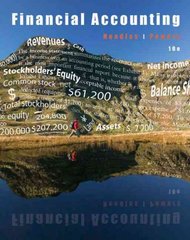Question
ABC plc. is a leading producer of beach equipment. The company is currently evaluating a new product: a self-folding beach umbrella. The new production equipment
ABC plc. is a leading producer of beach equipment. The company is currently
evaluating a new product: a self-folding beach umbrella. The new production
equipment will cost 400,000, while shipping, installation and insurance expenses
will total an additional 50,000; these expenses will be involved in the overall
equipment costs and will be depreciated alongside. Further, ABCs working capital
would have to be increased by 10,000 at the time of the initial investment; this
investment in working capital will be recovered when the project is terminated. The
machinery has an economic life of 4 years, and the company can make use of special
tax laws that allow them to apply the following annual depreciation rates on the total
cost of the machinery: 0.4, 0.3, 0.2 and 0.1 in Years 1 through 4, respectively. The
machinery will have been fully depreciated at the end of Year 4, but the management
anticipate that they will be able to sell it at Year 4 at a price of 80,000. The new
production will take place at a part of the ABCs main factory building that was
recently refurbished as part of a routine annual building refurbishment program; ABC
spent 100,000 to refurbish this specific part of the factory building.
ABCs management expects to sell 120,000 beach umbrellas annually during the
next 4 years, at a price of 10.00 per umbrella, of which 8.00 per umbrella cover
fixed and variable costs. While working on the sales figures, the sales department
notified the management that some customers that would otherwise buy the regular
beach umbrellas, will now turn to the new product, causing the regular umbrellas
sales figure to drop by 120,000 annually; however, this drop in the regular umbrellas
production will also lead to a fall in the respective costs by 40,000. ABCs cost of
capital is 10%, and the companys tax rate is 20%. Assume that ABC will be a
profitable company in the next 4 years.
- Calculate the initial cost / initial outlay of the project and the expected nonoperating terminal (Year 4) cash flow of the project.
- Calculate the projects final annual net cash flows (including operating and nonoperating).
- Suppose that the sales price will increase with an annual inflation of 5% beginning after Year 0, and that costs will increase by 2% per year. Calculate the projects new final annual net cash flows.
- Evaluate the project for both sets of cash flows (as calculated in questions 2 and 3 above) according to its NPV, IRR, Profitability Index, and Payback Period
- Assume that tax authorities had not allowed the special tax laws that allowed the company to apply the above-mentioned depreciation rates, and the company would have to use the straight-line depreciation method. Discuss and show how this would affect the NPV and the IRR of the investment project (assume no inflation - as in Q6 and that all other parameters remain stable).
Step by Step Solution
There are 3 Steps involved in it
Step: 1

Get Instant Access to Expert-Tailored Solutions
See step-by-step solutions with expert insights and AI powered tools for academic success
Step: 2

Step: 3

Ace Your Homework with AI
Get the answers you need in no time with our AI-driven, step-by-step assistance
Get Started


